Berlin is one of the most vibrant metropolises in Europe. Moreover, the city’s past is still haunting contemporary life, and the turbulent 20th century has left its mark everywhere. Writing a travel guide to Berlin is, therefore, a daunting task. You see, no trip to Berlin is complete without visiting its historic places. On the other hand, Berlin has an avant-garde art scene and nightlife that it’s hard to find elsewhere. Therefore, in this guide on how to spend 3 days in Berlin, you’ll find a wide variety of things.
Of course, you can stretch the schedule if you have 4 days in Berlin or even one week. However, since most people visit Berlin for a long weekend or a city break, a three-day itinerary would be the most compatible. At this point, you can rightly wonder: can you see everything in 3 days in Berlin? Well, the answer is obviously no. Nevertheless, after living in the city for more than ten years, I can assure you that I am still discovering new places. Apparently, these are not typical tourist spots but are places of interest.
That said, when people ask me how many days they should stay in Berlin to get a good impression, I usually reply, “A month.” It’s not an exaggeration, but I also know that the majority can’t afford a month in Berlin. So, while this is a comprehensive travel guide to Berlin, I also want you to know that instead of stuffing it with every landmark, I also preferred adding some local things to do in Berlin.
So, let’s start with the 3 days in Berlin travel guide and the suggested itineraries.
*Some of the links are affiliate links. It means that if you purchase something, I might earn a small commission at no additional cost to you.
3 days in Berlin: where to stay

I know it’s an odd start to the 3 days in Berlin city guide, but: have you ever been to Paris? If you’ve visited Paris and thought it was big, here’s a fun fact: Berlin is nine times bigger than Paris. I’m writing this in order to give you an impression of how extended the city is. Subsequently, it makes sense to choose wisely where to stay.
First of all, Berlin’s center is marked as Zone A. Therefore, whatever lies within Zone A will initially be a good starting point for your accommodation search. While some neighborhoods are closer to nightlife and landmarks than others, the truth is that public transport will bring you everywhere. So, I can only recommend searching for a place to stay in Zone A. I will add some hotels below.
On the other hand, Zone B signifies the suburbs of Berlin. While it’s much quieter there, you might lose time on the metro or buses. If you are just for 3 days in Berlin (or even 4 or 5), you don’t want that. Subsequently, there is a Zone C in Berlin, but you’ll be way out of town. There are forests and lakes, but you will also be 60 kilometers from the city center. For a short Berlin stay, I suggest you skip this option too.
The neighborhoods of Berlin
One can really find everything in the neighborhoods of Berlin. There are residential areas but also hoods dedicated to nightlife. I’m adding a line or two for some districts of downtown Berlin to give you a better impression. The german word Kiez stands for the neighborhood, but in Berlin, it’s not uncommon to have smaller hoods within the Kiez.
- Mitte. Mitte is one of the fanciest areas of Berlin. Hipsters, artists, but also working-class people create a typical Berlin mixture. A good spot for accommodation because you’ll be in the middle of everything.
- Charlottenburg. One more central area of the city, this time in the former West Berlin. Loads of stores and the famous Kudamm avenue are there. You can’t go wrong with it.
- Friedrichshain-Kreuzberg. The areas that made Berlin world-famous. All sorts of creatives and loads of party-goers inhabit the area. Definitely, the place to stay if you are young (or young at heart).
- Neukölln. Neukölln is the up-and-coming neighborhood of Berlin. Despite recent changes, it’s one of the most alternative areas of downtown Berlin. David Bowie wrote a song about Neukölln too.
- Tempelhof-Schöneberg. One more traditional district of Berlin. It offers a laid-back lifestyle and is close to the former Tempelhof Airport, which is nowadays a park and a favorite hangout for Berliners.
- Wedding & Moabit. The two quiet hoods of Berlin were always to-become but never made it so far. Centrally located with less buzz even though they are close to more lively areas. This also means: it’s cheaper to stay there.
- Prenzlauer Berg. Subbed often as the “hill of pregnants” due to the young families moving there. A beautiful area with some nightlife and great cafes.
Why I don’t recommend AirBnB
In the following section, you will only see hotels and no Airbnb rentals. The reason is that there has been aggressive gentrification in Berlin for years. The rents are skyrocketing in the city, and people have to move out of Berlin because they can’t afford the cost of living. While this is not exclusively Airbnb’s fault, it’s indeed one of gentrification’s primary vehicles.
Even though I can’t persuade you to avoid Airbnb (it’s your choice, after all), I won’t recommend staying in an Airbnb flat. Berlin should be a paradise for everyone, but in ten years, the Berlin you adore won’t be here if gentrification continues. Think wisely.
The best hotels to stay in for your 3 days in Berlin journey
I’m adding here a small selection of hotels for your stay. These are the hotels that I always recommend to my friends when they visit Berlin (when I can’t host them, of course). Apparently, they were satisfied, and that’s why I’m proposing them here. They all tick the boxes I mentioned above: close to the city center, close to landmarks, and good connections with public transport. If none of these is for you, there’s an interactive map below to search for accommodation in Berlin.
- Hollywood Media Hotel Berlin. Straight at Kudamm in West Berlin, this hotel is a tribute to cinema: each room features a famous actor or actress. There is a metro station 50 meters away (Uhlandstrasse).
- Art’otel Berlin Kudamm. Just off the Kudamm, this is a stylish hotel. Easy access to public transport and an excellent connection to most places of interest.
- Waldorf Astoria. Prime location, directly at the Zoo. It’s an expensive option, but if you can afford it, it deserves it. Countless buses, trains, and metro lines cross the nearby station.
- Motel One at Potsdamer Platz. I’m a big fan of Motel One Hotels. They are very modern and clean. There are several Motel Ones in Berlin, and I’m choosing this one at Potsdamer Platz because it’s in the middle of the city. However, feel free to check the other Motel One Hotels around the city. They are all equally great, and the prices are affordable.
- i31 Berlin Mitte. A boutique hotel in the heart of Mitte. An excellent option for your accommodation in Berlin, close to almost everything.
- NH Hotel at Checkpoint Charlie. Located close to the famous Checkpoint Charlie, the NH is a beautiful hotel in the middle of the city.
- Radisson Blu Hotel Berlin. If you prefer more traditional hotel chains, the Radisson Blu is a safe choice. Close to Alexanderplatz and featuring an impressive aquarium, the Radisson is an excellent place for your stay in Berlin.
- Hüttenpalast. Probably the most original option on this list. Located in the heart of Neukölln, the Hüttenpalast is one of these cozy, bizarre, and welcoming places that make Berlin a great place to be. So check it out and book a room if available for your days.
3 days in Berlin: public transport & other options
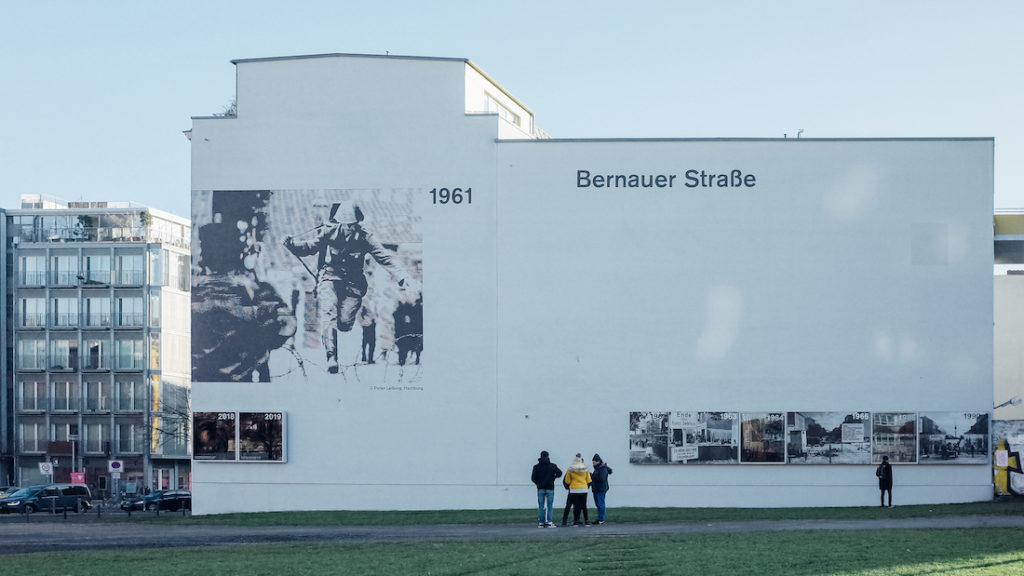
If you just have 3 days in Berlin, you should make the most out of public transport. Berlin is huge, and while I recommend walking as much as possible, you’ll need public transportation at some point. Berlin has buses, metro lines (U-Bahn), and suburban trains (S-Bahns). You can obtain a ticket from the vending machines or the bus drivers, and you can use it for two hours. The ticket is costly, though (almost 3 euros for one ride); therefore, I highly recommend buying a pass.
Depending on the length of your stay, there are several passes to choose from, and you can check them at the BVG website here. Prices are constantly changing in Berlin, so check them out. If you don’t plan to visit Zone C, you should always buy the AB ticket. It will cover you for most of the places of interest. The Einzelfahrschein Berlin AB is a single ticket. Scroll further down, and you’ll see the Tageskarten or day tickets.
Alternatively, and only if you plan to visit some museums, there’s also the Berlin Welcome Card. The 72-hour ticket currently costs 51 euros, giving you free entry to the Museum Island of Berlin (more on later). Check the Berlin Welcome Card here.
Other options: bikes & cars
Berlin is a paradise for cycling. The city has a vast network of bike lanes, and you can easily cycle throughout Berlin. In my opinion, this is one of the best ways to explore Berlin, and it’s, of course, environmentally friendly. Several bike stores around Berlin rent bikes, but a few options exist to rent a bike via smartphone apps. You just download the app, search via GPS for a nearby bike and unlock it via the app. You pay as you go, and that’s a fair deal that won’t cost you much.
Two good companies offering bike rental services are Nextbike and the Donkey Republic, among others.
Alternatively, you can also rent a car. Exactly like the bike apps, there are similar services with cars. You download the app, find the car, and (usually) pay per minute of use. My preferred company for carsharing in Berlin is ShareNow.
If you are more into classic car renting options, though, then RentalCars is your best bet. I use RentalCars whenever I’m traveling and am delighted by their services. Rent a car in Germany via RentalCars here.
Three days in Berlin: the itineraries
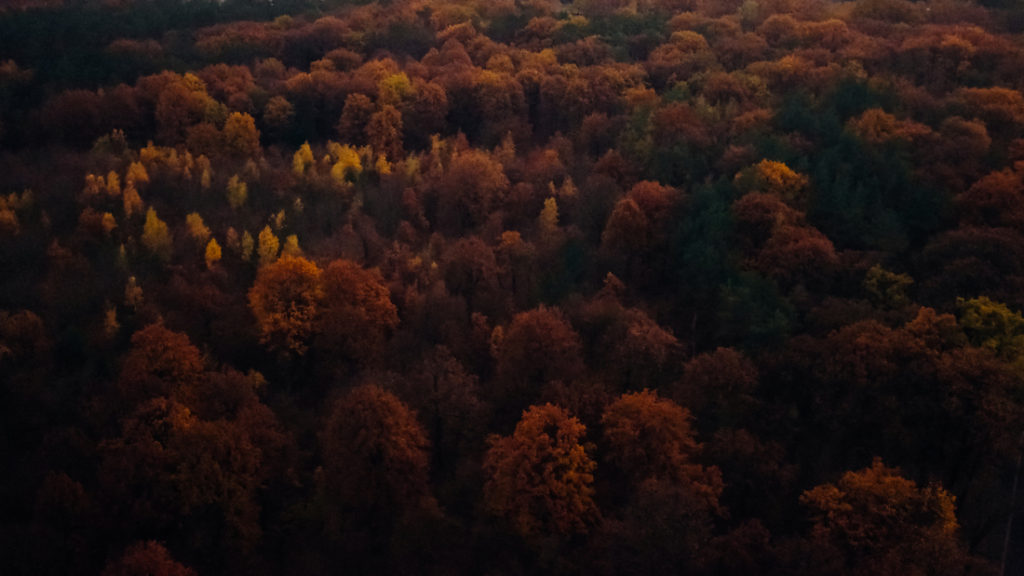
So, it’s time to start with the itineraries for your three-day Berlin journey. In the itinerary you’ll see below, I considered several things.
First of all, this is a guide not just for people who haven’t been to Berlin before. It’s also for those who loved it and wanted to return to the city and explore it further. Therefore, I added several tourist spots for first-time visitors and some very local things to do in Berlin. As I already wrote, in 3 days in Berlin, you can just get a glimpse of the city. However, if you make the most out of your time, you’ll fall in love with it.
Apart from that, I also considered things like budget, safety, etc. Despite having a dedicated section about these things further down in this Berlin guide, I wanted to clarify that. Berlin is a safe city, and you won’t encounter problems. Of course, minor issues like pickpocketing can occur -but that’s how big cities are. I have been in Berlin for more than ten years and have never had problems.
Last but not least, you’ll see now and then a mention to “visit a museum.” While I’ll propose some museums depending on the area, I’ll also add an extra section with the best museums in Berlin to choose from based on your interests.
So, now that everything is clear, let’s start with the tour guide to Berlin.
Day 1: the former West Berlin
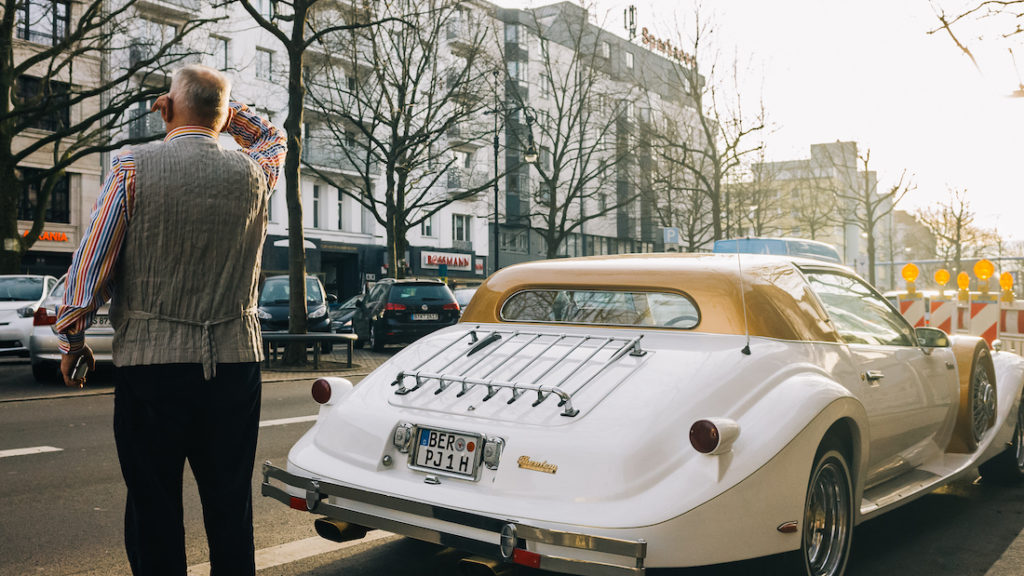
As you probably know, Berlin was divided during the Cold War into two sections, West and East Berlin. Don’t imagine that like a line separating the city, though. West Berlin was actually an island within East Berlin. However, this might not be visible if you just look at the city center. But check a full map of Berlin, and you’ll get an impression. West Berlin consisted of a few neighborhoods, and people could still travel abroad -for East Berliners traveling was prohibited. So while the Eastern part of the city changed a lot, West Berlin remained intact for a more extended period. It’s only recently that it started changing. For this itinerary, I propose a visit to two neighborhoods.
Charlottenburg & the area around Ku’damm
Ku’damm is short for Kurfürstendamm, the most famous avenue in former West Berlin. This long boulevard has fashion shops, upscale hotels, and some landmarks. You can reach Ku’damm via the metro (U1 Kurfürstendamm), with a number of buses, and also via S-Bahn (stop at Zoologischer Garten). As the name suggests, there’s a zoo a few meters away from the train station, and nearby, you’ll also find the Kaiser Wilhelm Memorial Church. The church was bombed during WWII and hasn’t been repaired. Berliners call it “the hollow tooth” or “the lipstick.”
Walk down the Ku’damm for an old Berlin flair and some shopping, and then take the 109 bus. Stop at Luisenplatz and reach the Charlottenburg Palace (Schloss Charlottenburg). That’s a baroque palace built in the 17th century featuring a belvedere, a mausoleum, a theatre, and a pavilion. If you are interested in palaces, you can take a tour; otherwise, you can enjoy a wonderful walk in its gardens. That’s a typical activity of the locals -and if you have a bike, even better.
Schöneberg & the house of David Bowie
Schöneberg is one of the typical working-class neighborhoods of Berlin. While that’s not solely a residential area, Schöneberg feels much quieter than other hoods in Berlin. Some of the most notable citizens of Schöneberg include actress Marlene Dietrich, photographer Helmut Newton, and writer Christopher Isherwood (read Goodbye to Berlin before your journey!). But somehow, Schöneberg is immortalized by an iconic duo that lived here in the 70s: Iggie Pop and David Bowie. The place where David Bowie lived in Berlin still exists, and you can see it at Hauptstrasse 155. Fans still come across to leave flowers and memorabilia, but you can’t visit the flat itself. It’s a short walk from the U7 Kleistpark metro station.
Have a stop for a late breakfast or a cup of coffee at Bilderbuch, a very local spot in Schöneberg. The entrance might not thrill you but cross the bar of Bilderbuch and head to the room in the back. It’s a beautiful place -and a very Berlinesque one. After unwinding, head to KaDeWe, or Kaufhaus des Westens, the most iconic shopping center of West Berlin. Prices tend to be steep, but you don’t have to go on a shopping spree anyway.
Museums in West Berlin
Try to visit at least one of the following museums in former West Berlin. If none of them interests you, head over to Tiergarten, the vast park attached to the Zoo, and walk through it. There are also a couple of open-air Beer-gardens (Biergarten) if you feel like relaxing further. So, the museums are:
- c/o Berlin. That’s hands down my favorite museum in Berlin, and it’s dedicated to photography. There are several exhibitions annually, and they are carefully curated. So, if you are a photography fan, don’t miss it. It’s next to the Zoologischer Garten station, and it’ll combine perfectly with your walk along Ku’damm. Check the current exhibitions of c/o Berlin here.
- Museum for photography. Almost across the c/o Berlin, you can also visit the Museum of Photography, where you can see photos by Helmut Newton. There are, of course, other exhibitions as well. You can find more info about the Museum of Photography here.
- Museum Berggruen. Close to the Charlottenburg Palace, you can also find the Museum Berggruen. That’s a beautiful small museum with an eclectic modern art collection. Attached to the beautiful Schloss-Strasse, this is a must for your visit to this side of the city and a very local thing to do and enjoy. Find more info about the Museum Berggruen here.
Where to eat and drink in West Berlin
There are loads of places to eat and drink in West Berlin. Some are well-known to tourists, while others remain more hidden. I’ll try to add a few here, and since you don’t have to rush around the city, I’m going to pick one area: Savignyplatz. That’s probably one of the most beautiful areas of Berlin -even though a tad upscale- and you have plenty of options to eat and drink. While the former West Berlin is more famous for its eateries and less for its nightlife, this doesn’t mean you don’t have some options. The ones I’d pick are:
Schwarzes Cafe. One of the most iconic places in West Berlin, which closes only for a couple of hours per week. It offers a 24/7 service, and you can also try some local dishes. Check the schedule and the menu of Schwarzes Cafe here.
Dicke Wirtin. Even though tourists have started learning about Dicke Wirtin, it remains one of the most local restaurants at Savigny Platz. The interior can be too German for some, and the portions are enormous. Find more info about Dicke Wirtin here.
Bleibtreu cafe. Featuring an interior straight from the 70s, the Bleibtreu cafe is one more local spot close to Savignyplatz at Bleibtreustrasse. That’s one of my favorite streets in Berlin, and I wrote about it here. More info about the Bleibtreu cafe itself you can find here.
Hefner. If you want to find a place for a drink at Savignyplatz, I’d suggest Hefner. It’s a nice compact bar with good cocktails. They only have a Facebook page.
Kastanie. Now, that’s not at Savignyplatz, but since I recommended a stop at Charlottenburg Palace, I also thought of adding a spot there. An old-style Berlin cafe-restaurant, the Kastanie is a very local hangout. It has a beautiful yard that’s always full of life during the summertime. It’s straight at Schloss-Strasse. Find more info about Kastanie here.
Day 2: Exploring East Berlin
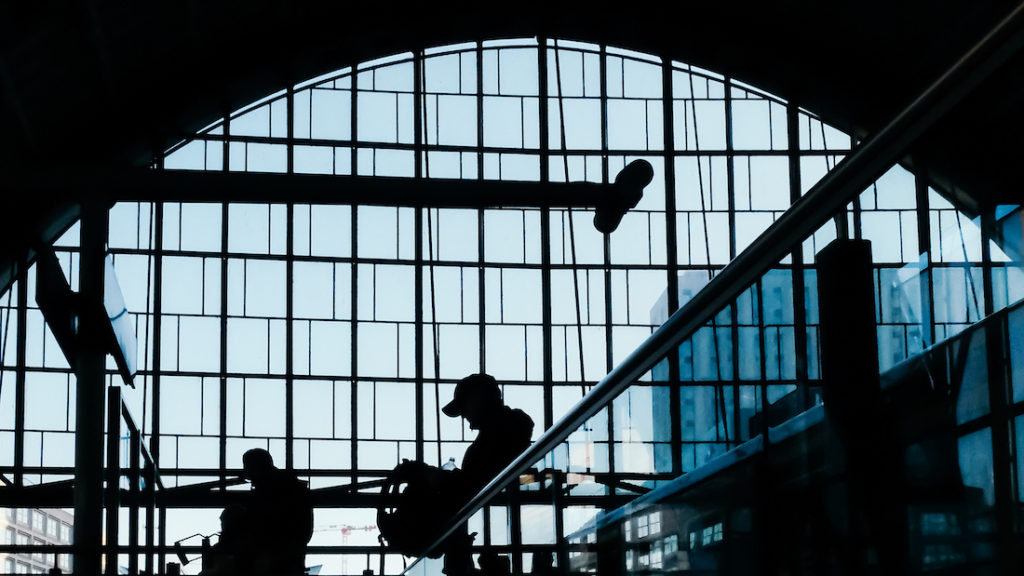
East Berlin has seen significant changes during the past two decades. After the Fall of the Berlin Wall, it felt like a no-man’s-land, but soon it took off. Despite the sudden changes, there are neighborhoods where its character remains intact. It occupies a much larger area, and you’ll definitely have more sightseeing on this side of Berlin. Here you’ll also have the chance to visit Museum Island, where the most famous museums in Berlin are located.
Mitte & Prenzlauer Berg
Those two areas of Berlin will keep you occupied for most of the day. There are loads of things to see and do, and I would suggest starting with a walk around Prenzlauer Berg. A breakfast at Anna Blume, one of the most famous cafes in the area, is always a good idea. Then head over to Alexanderplatz by tram (East Berlin still has trams) and see the most iconic square of East Berlin. The famous TV Tower is also there, and if the day is clear, consider reaching the top of the Tower (not free) for a 360 panoramic view of Berlin.
The famous boulevard Unter den Linden starts a few hundred meters after the TV Tower. You can think of it as the Ku’damm of East Berlin. At first, you will see the Berliner Dom, i.e., the Berlin Cathedral, and as you walk, you’ll see the Opera and the Museum Island (more on that in the next section). Carry on walking (or cycle, or use a bus), and you’ll see the Brandenburg Gate at the end of Unter den Linden. The so-called Brandenburger Tor was also one of the borders between East and West Berlin.
After crossing the Brandenburg Gate, you have two options: the Reichstag building on the right side and the Potsdamer Platz on the left. The Reichstag is the parliamentary building of Germany, and it’s famous for its glass dome. You can visit it, but you need to register yourself in advance here. I never found it that fascinating, but it’s up to you. Then head over to Potsdamer Platz, and visit the Holocaust Memorial. Finally, stop at Potsdamer Platz, the modern version of Berlin with skyscrapers and offices. While there’s not much daily life there, it’s interesting to see how a no-man’s-land transformed into a place of commerce.
If you feel like walking a bit more, add a visit to the Berlin Wall Memorial at Bernauer Strasse to your schedule. There’s an intact section of the Wall, and the area feels like an open-air museum. If you happen to be there at the weekend, don’t miss the chance to visit the nearby Mauerpark. That’s a big park serving as a bazaar and local hangout -and yes, it’s usually packed beyond words.
Museums in East Berlin
Well, the absolute highlight on this side of Berlin is Museum Island. Promoted by the local tourist office as “one island, five museums, one ticket,” that’s indeed what Museum Island is. Specifically, you’ll find the following five museums:
- Pergamonmuseum (Pergamon Museum)
- Bode-Museum
- Neues Museum (New Museum)
- Alte Nationalgalerie – Old National Gallery
- Altes Museum (Old Museum)
For museum-goers visiting at least one of them is usually a must. You can find more info about Museum Island here. However, be prepared to spend almost the whole day if you want to see all five of them. If I were you, I’d skip the day ticket for the museums and pick just one to visit.
Even though some of them are on the border between East and West Berlin, a few museums deserve a visit. Two are close to Potsdamer Platz, while the other is a fifteen-minute walk from Reichstag and close to the main central station (Hauptbahnhof). These are:
Martin Gropius Bau. That’s one of the most progressive museums in Berlin. I have seen exhibitions by Olafur Eliasson and Ai Weiwei and another about David Bowie’s life in Berlin. That said, if you are into contemporary art, you should check the Martin Gropius Bau schedule. Due to the large number of visitors, I’d suggest you buy a ticket online.
The topography of Terror. Next to the Martin Gropius Bau and equally close to Potsdamer Platz, the Topographie des Terrors is a documentation center dealing with the atrocities of the Nazis. Entry is free of charge. Find more info about the Topographie des Terrors here.
Hamburger Bahnhof. Located a bit off from the itinerary I proposed but still easy to reach, the Hamburger Bahnhof Museum is one of the most exciting museums in Berlin. The museum’s building served as a train station in former times, but today, it hosts several exhibitions annually. I wrote about an exhibition about Emil Nolde in the museum (check my Berlin Resources below). You can check the current exhibitions of the Hamburger Bahnhof Museum here.
Where to eat and drink in East Berlin
Mitte and Prenzlauer Berg have loads of options regarding eating and drinking. So I’m offering here a couple of suggestions.
Kaschk. A cafe that late at night turns into a bar at Rosa Luxemburg Platz. A lovely place with a pleasant atmosphere. Find more info about Kaschk here.
Mein Haus am See. A classic place for parties and drinks in Mitte that stays open all night long. More info and photos about Mein Haus am See here.
Ishin. If you are up to some Chinese food, that’s probably one of the most underrated places in Berlin. The food is really high quality, and it’s cheap beyond words. So if you are on a tight budget and aren’t after something fancy, make sure to stop here. Close to Friedrichstrasse S-Bahn station. They have a couple of locations, but the one in Mitte is at Mittelstrasse. See more info about Ishin here.
Zur Haxe. That’s a typical German restaurant in the northern part of Prenzlauer Berg. A laid-back atmosphere and lots of meat dishes. See more info about Zur Haxe here.
Lao Xiang. Asian restaurants are trendy in this area, and Lao Xiang is definitely a beloved one among the locals. Check here the menu of Lao Xiang.
Day 3: Alternative Berlin
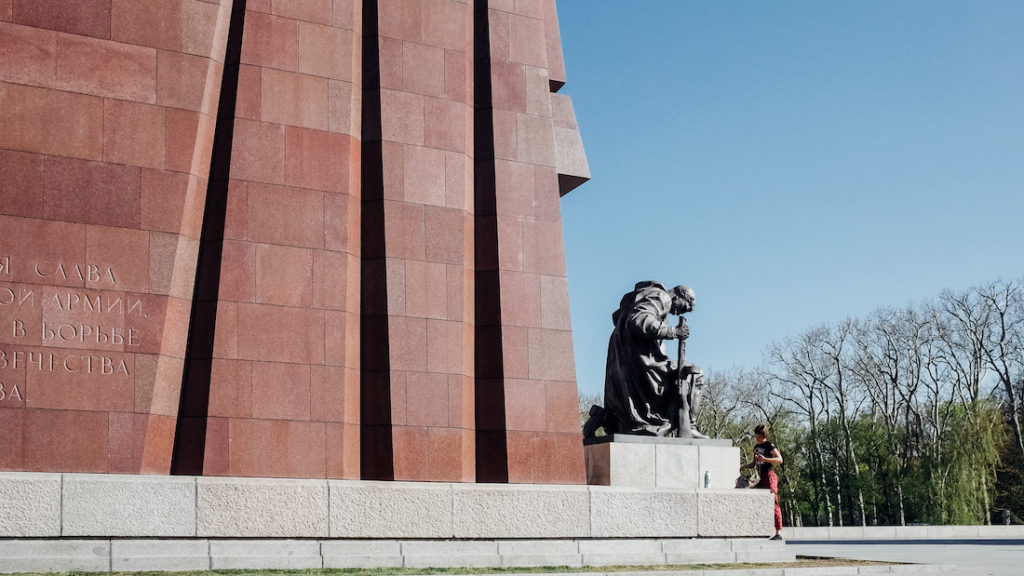
Now, if you just have three days in Berlin, the chances are that you are here for the alternative lifestyle and the nightlife. So, after adding the relative info about sightseeing (hint: there’s a bit more), it’s time to explore what Berlin is all about. The truth is that Berlin has changed a lot over the last few years. However, a part of its revolutionary spirit is still (somehow) here. When people think -or daydream- of Berlin, they usually have three neighborhoods in mind: Kreuzberg (mainly), Neukölln, and Friedrichshain. That’s usually where the creatives are and also where the clubs are.
So, on this last day of this 3 days in Berlin tour, I’m going to add a route to make the most out of your days in the area.
Kreuzberg, Neukölln, and Friedrichshain

These are the most famous areas of Berlin and probably the most attractive for travelers. Why’s that? Well, this area has attracted many artists and people with different ideas about life after the Fall of the Wall. In the early 90s, no one would come to Berlin to make money. It wasn’t a place for business at all. Slowly, Kreuzberg became the epicenter of art life. Musicians, writers, and painters came from around the world and called Berlin home. The good days are most likely gone, but the art scene is still active in Berlin. It’s just that it’s not the only vibrant scene anymore…
That said, apart from the iconic clubs, there are also more things to do and see in the alternative part of Berlin. So, as a starting point for an alternative Berlin tour, I would suggest starting from the U-Bahn station at Warschauer-Strasse. From there, you can walk down the street and reach the East Side Gallery. That’s a remnant of the Berlin Wall, which nowadays serves as an open-air exhibition.
The Wall’s leftovers are covered with paintings and graffiti created by artists from all over the globe. Despite being one of Berlin’s most iconic spots, a small part of the East Side Gallery was demolished a few years ago: the city preferred to build a monstrous apartment block straight at the river. Next to it, you can also see (and cross) the Oberbaumbrücke, probably the most iconic bridge in Berlin.
Among the best things to do in Berlin is enjoy everything the city offers for free. Strolling around the neighborhoods, walking through the parks, and cycling, are all typical activities. Why am I saying that? Well, it’s because I firmly believe that journeys are not just for sightseeing. In the previous days, I added some museums for your visit. But museums are only one aspect of city life. Therefore, on this third day of your stay in Berlin, I suggest you take a step back and enjoy what this city is like. Visit the cafes, enter the little shops of Kreuzberg and Neukölln, visit the former Tempelhof Airport, and have a picnic or a ride with your bike.
So, if you visit Kreuzberg, Neukölln, and Friedrichshain, do it like the Berliners. Below, I’m going to add a few places of interest. But I strongly suggest you take a step back and enjoy Berlin. Apart from the East Side Gallery (it might not be there forever) that I find a must-see, you can save the rest for your next time in Berlin.
Things to do in Kreuzberg, Neukölln & Friedrichshain
- Jewish Museum. Apart from being one of the most important museums in Berlin, the Jewish Museum attracts people because of its architecture. The Museum explores Jewish identity and culture in Europe and beyond. Don’t miss the chance to visit it. Find more info about the Jewish Museum here.
- Martin Gropius Bau. I know that I added Martin Gropius Bau earlier, but it’s technically part of Kreuzberg. Even though it’s close to Potsdamer Platz, and that’s why I added it there, you can also combine it with a visit to the Jewish Museum. So, I’m adding again here the link to Martin Gropius Bau.
- Stroll down the Landwehrkanal. One of the most classic promenades of Berlin is walking down the Landwehrkanal (or just Kanal for the locals). People hang out on the banks of the Kanal around the clock, and that’s one of the liveliest areas of Berlin, especially when the days are sunny.
- Checkpoint Charlie. The most famous crossing point from West to East Berlin is nowadays rather dull and highly commercialized. Not much to see here, but if you’d like to say something like “been there, done that,” then feel free to visit it.
- The parks. On this side of the city, the parks are always packed, and the locals grill, stroll, cycle, and spend their free time. Viktoria Park, Hasenheide, Görlitzer Park (nicknamed Görli), and Treptower Park are among the city’s most famous parks. Also, don’t miss the Tempelhofer Feld, a former airport that has become the biggest green space in Berlin.
Where to eat and drink in Kreuzberg, Neukölln, and Friedrichshain
Well, the proper answer here is…everywhere. These are three of Berlin’s busiest neighborhoods, and the laid-back atmosphere translates to countless cafes and restaurants. It’s impossible to add every single awesome-place-X here; therefore, I’ll just add some of my favorite ones. So:
- Klunkerkranich. That’s a bar on the roof of a shopping mall (Neukölln Arcarden), right at Rathaus Neukölln. If it doesn’t sound that tempting, I can assure you it’s one of the hottest spots in Berlin, especially during summertime. Check the Klunkerkranich here.
- Barettino. In the heart of Neukölln, Barettino is one of these places where you can eat excellent homemade Italian food at average prices. Warm and typical Berlin atmosphere, easy-going service, and delicious food. More info about the Barettino here.
- Silo Coffee. One of the best cafes in Friedrichshain, Silo coffee, also offers breakfast and a few dishes. Make sure to check it out if you are visiting this side of the town. Check Silo Coffee here.
- Cafe Luzia. One of the most atmospheric cafes in Berlin that stays open till late. There’s also a place to smoke inside. Luzia is located in the very heart of Kreuzberg, so it’s also a good stop after a long day of exploring. Check cafe Luzia here (even the website is fun).
- Burgermeister. Well, not a proper restaurant for sure, but it’s also as Berlin as it gets. Berlin’s most famous burger joint is located in the metro station’s toilette at Schlessiches Tor. The burger is indeed delicious, so make sure to stop and queue for a burger. More info about the Burgermeister is here.
Best tours in Berlin

I’ll add here a short section with the best tours in Berlin. While you can see everything by yourself, I know many people enjoy guided tours. Therefore, I thought of adding a couple of them here.
Third Reich and Cold War Tour. That’s an excellent tour for people interested in history. It lasts two hours, and you will learn a lot about the history of Berlin. Check the prices for the Third Reich and Cold War Tour here.
Boat Tour along the River Spree. If you are into short cruises, you can take a 2,5 hours boat ride through River Spree. Lots of sightseeing and definitely a fun thing to do in Berlin if you’re there for the first time. Check the prices for the Boat Tour here.
Berlin TV-Tower Fast view. Skip the line and get access to the top of Berlin’s TV Tower. The view is stunning from up there. Check the prices for the TV Tower here.
Berlin’s Guided Bike Tour. Now, if you don’t want to rent your own bike, this one is probably for you. The organizers will offer you a bike, and you will drive through Berlin’s highlights for three hours. Check the Guided Bike Tour here.
3 days in Berlin: recap
Here’s what to see on a 3 days journey to Berlin:
First day: Explore West Berlin (Charlottenburg, David Bowie House, c/o Berlin, or another museum).
Second day: Explore East Berlin (Museum Island, Mitte, and Martin Gropius Bau).
Third day: Discover the alternative side of Berlin (Kreuzberg, Neukölln, and go clubbing).
3 days in Berlin itinerary: Frequently Asked Questions

So, before bringing this long Berlin travel guide to an end, I thought of adding an extra section with some frequently asked questions. Throughout the years, whenever a friend of mine visited me in Berlin, they’d ask me for some info. Most of them were asking me pretty much the same things. So, I suspect that these questions are interesting for more than just a few people. So, I’m giving the answers I always gave to my friends, hoping to help you as well.
Is Berlin safe?
Berlin is safe. I have never had any problems in Berlin for more than ten years, even when I return home late at night. Of course, minor incidents like pickpocketing or random talks with drunk people might occur. To put the whole thing into a better perspective, I’d say that Berlin is as safe as every big European capital. Use common sense, and nothing bad will happen.
Is Berlin expensive?
Well, the golden days of Berlin are gone. Once upon a time, you could rent a flat for 200 euros and spend just a couple of euros in the supermarket. This has changed drastically in the last couple of years. However, compared to other major European capitals like Paris or London, Berlin still feels relatively cheap. Don’t forget, of course, that Berlin is in Germany, a prosperous country -and as such, Berlin can’t be cheap like, let’s say, Kyiv. Keep an eye on your budget, but in general, I’d call Berlin’s prices moderate.
How to budget for three days in Berlin?
Apart from the flight tickets, which can be really cheap due to several low-cost carriers flying to Berlin, your main expense will be the accommodation. Here, everything goes: from cheap hostels where you can pay 10 euros per night in a dormitory to 1,000 euros in luxurious hotels.
I’d say an expected price range would be between 50 and 70 euros for a double room per night, breakfast included. Other than that, buying a pass for transportation instead of a single ticket is better. Also, the Berlin Welcome Card for 72 hours is a good option if you are interested in museums.
Food, on the other hand, is moderately priced. You can eat for approximately 20 euros everywhere in the city. The beer is relatively cheap in Berlin, and you should expect average European prices if you want to have a cocktail. As I already wrote, Berlin is not an expensive city in general, and you can easily visit it on a budget.
Do people speak English in Berlin?
Yes. Berlin is an international, multicultural city, and people speak English. In some areas like Prenzlauer Berg or Kreuzberg, you might hear just English due to many ex-pats. So there won’t be a language barrier for sure.
Which are the most famous Berlin clubs?
Berlin has been the Mecca of electronic music for decades, and some of the most iconic clubs worldwide are here. Even though some of them shut down recently and others are losing popularity, Berlin remains the party capital of Europe. Berghain, Tresor, KitKat, Watergate, and Sisyphos are among the most famous clubs. Their front door policy varies, but if you’d like to visit Berghain, you should be prepared to hear the famous “Sorry, not tonight” phrase from the bouncer.
If you are a fan of this kind of music, you should definitely try to get into at least one of them. However, various smaller venues gain popularity from word of mouth. Ask the locals, tell them what music you enjoy, and they’ll come up with a recommendation.
Are there any day trips worth taking from Berlin?
If I were you and only had 3 days in Berlin, I wouldn’t really consider a day trip. Berlin has way too many things to see and do and, above all, to enjoy. That said, the best things to do in Berlin are within the city’s borders. However, here are a few options if you want a short escape.
- Sachsenhausen Concentration Camp. Not that many people know that there was a concentration camp in Berlin. It’s not that close to the city center, though. The Sachsenhausen Concentration Camp lies 60 kilometers north of Berlin, in Oranienburg (Zone C with the transport). Visiting it is, of course, free of charge. Some of the premises are restored, and several exhibition halls are in the area. You can take the S1 S-Bahn and reach Oranienburg after approximately an hour. The Sachsenhausen Concentration Camp occupies a vast space. Therefore, you should calculate half a day to visit it. Find more info about Sacschenhausen Concentration Camp here.
- Potsdam. Potsdam is a suburb of Berlin that you can also reach by public transport. It’s famous for the Sanssouci Palace and the beautiful gardens surrounding it. Otherwise, it is a lovely small city, and you can spend the day strolling around. The Potsdam tourist bureau has lots of info about your visit.
- Pfaueninsel (or Peacock Island). Pfaueninsel is an island in the River Havel situated in Berlin-Wannsee. The island is a UNESCO World Heritage Site and is very popular for day trips. The island is a nature reserve; you can spot loads of free-ranging peacocks. Visiting it is pretty easy, and you can reach it via a tiny ferry that needs a minute or two to bring you there. More info about the Pfaueninsel you can find here.
What are the best things to do in Berlin in February?
February can be a really dark and cold month in Berlin. In my opinion, there’s only one reason to visit Berlin in February: the Berlinale. The Berlinale is Berlin’s International Film Festival, attracting hundreds of thousands of visitors. If you love the cinema, then the Berlinale is an excellent reason to visit Berlin. If not, save your money and better come later in the spring…
Below, in my Berlin resources section, you’ll find my guide to the Berlinale, which has been for years on the first page of Google and was featured in local media as well. If you want to plan a Berlinale visit, you’ll find all the info you need in the guide. I always update the guide a month before every Berlinale edition, so feel free to save it for future use.
How many days do I need to have a good overview of Berlin?
Most of my friends usually stay for 3 or 4 days in Berlin. All of them, though, said that they’d like to spend more time here. So, if you ask me, spending one week in Berlin is the minimum to get a good overview of the city. In two weeks in Berlin, you can practically explore all of its downtown neighborhoods, and if you spend one month in Berlin, you’ll slowly start having favorite places and moving without a map or an app to some areas. So, go for it if you can have one week in Berlin. And take the itinerary above at a slower pace.
What tourist places do you recommend if I only have one day in Berlin?
I’m afraid I can’t be much help. If you only have one day in Berlin, it means that you are actually here for a couple of hours. I’d say get the 100 bus from Zoo to Alexanderplatz (or the other way around) and try to stop now and then. You can see the TV Tower and Alexanderplatz, the Brandenburg Gate, and the Reichstag. But really, that’s too tight.
Are there any Christmas Markets in Berlin?
Yes, there are, and some of them are beautiful. I wrote an extensive guide (not like this one) about the best Christmas Markets in Berlin. You will find it straight below in my Berlin resources section.
Berlin travel guide: My Resources
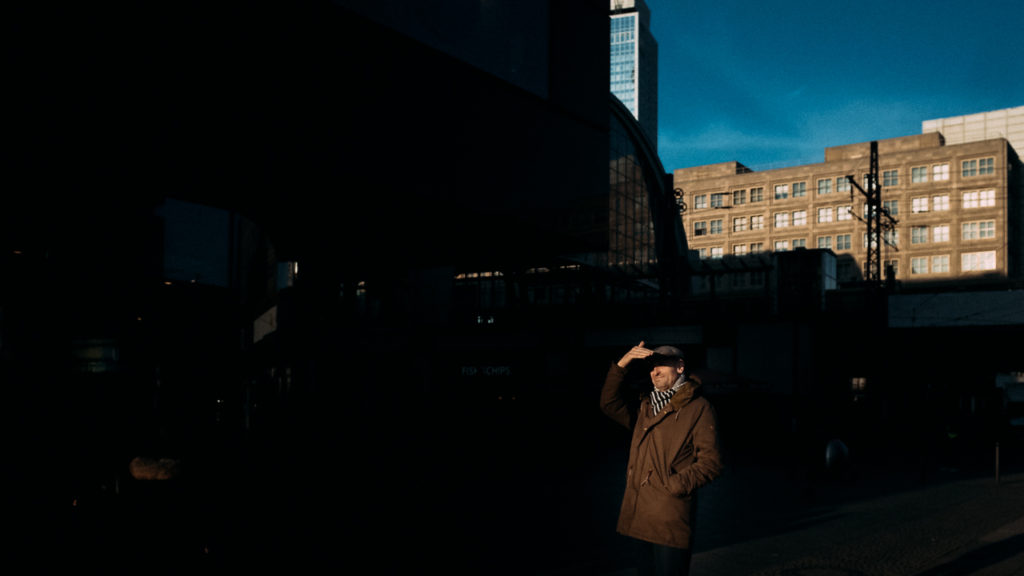
Even though I write mainly about my journeys, many readers asked me for more posts about Berlin. It makes sense because Berlin is one of the most beloved cities in Europe. So, lately, I’ve been writing about Berlin, and I’m adding all my posts about the city. Some of the things are really local, while others seem more generic. However, these articles can help you better understand the city if you plan to visit Berlin. Or, to give you some extra ideas as well.
So, here’s what I have written about Berlin so far.
Berlinale. I promised you a long guide about the Berlinale: you can find it here. You can also read my Berlinale 2019 recap, here is the 2020 recap, and here’s the 2022 recap.
10 facts about Berlin. In this post, you will discover ten interesting facts about Berlin plus ten budget accommodations for your stay. Read the 10 facts here.
Dennewitzstrasse 2. That’s one of the city’s hidden gems. An odd architectural plan of the early 20th century dictated that the Berlin railway should cross through a house. The Berlin U-Bahn still runs through the building, and you can read more about the Dennewitzstrasse 2 here.
Christmas Markets. I also promised you an article about the best Christmas Markets in Berlin: you can find it here.
Festival of Lights. Every year in October, the Festival of Light takes place in Berlin. Landmarks and old buildings are illuminated for two weeks every night. I wrote a report with several photos, tips, and info inside -and you can see it here.
Bleibtreustrasse. If you read the whole article, you probably remember that I love the Bleibtruestrasse. I wrote a short article about this beautiful street. There’s even a James Joyce reference inside.
Emil Nolde. That’s an article about the painter Emil Nolde and the exhibition at Hamburger Bahnhof quite some time ago. You can read it here, and you can also see photos of the museum.
Lockdown diaries. If you have any interest in the Coronavirus lockdown and how it felt in Berlin, well, I kept a journal. It’s a very long one, and you can read it here.
My photography & Berlin. Sometimes I go out with my camera, and I take photos. There are some posts about photography in Berlin in this blog. One is about street photography (read it here), and another is about my polaroids from Berlin (see it here). The latter also covers the celebrations from the 30th anniversary of the Fall of the Berlin Wall.
Two very local posts about Berlin. I also wrote about the former Tempelhof Airport and why you should visit it (read it here), and also I wrote about one of the most famous open-air hangouts in Berlin (read it here). Hint for the latter: it’s a bridge.
The Palace of Tears. That’s one of the most iconic Berlin landmarks, and it’s free to visit. Find out everything you need to know about the Palace of Tears here.
Bonus post. If you are Greek, that’s what leaving Athens for Berlin feels like sometimes…
3 days in Berlin travel guide: Final thoughts
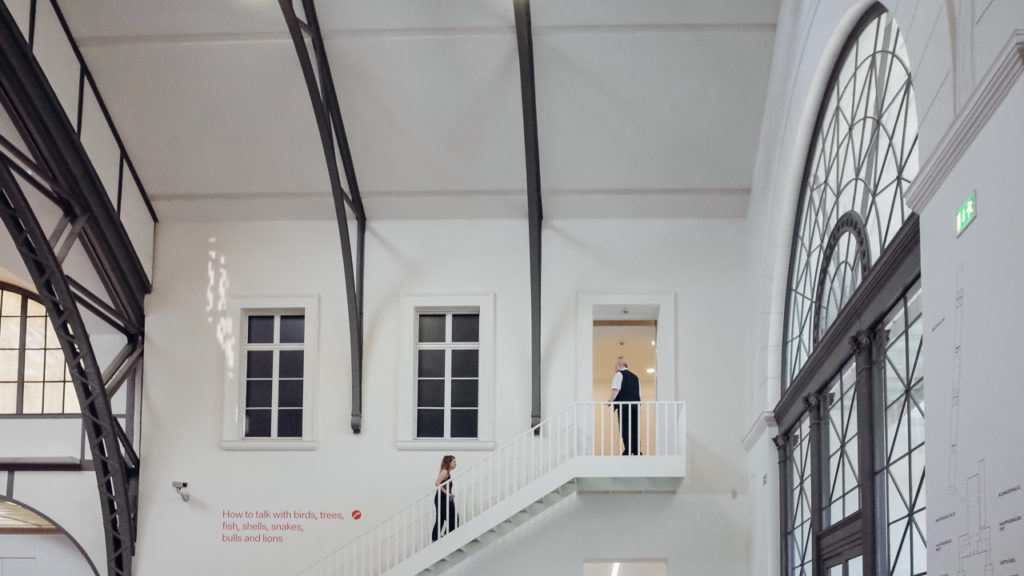
Well, if you made it to the very end of this long travel guide on how to spend three days in Berlin, it means that you really want to make the most out of your stay. As you can see from the text, the photos, and the videos, the best things to do in Berlin are not in just one area. Berlin is a big city, and as such, it might overwhelm you sometimes.
However, the city is beautiful and unique. As a rule of thumb, when you just have 3 or 4 days in Berlin, I always suggest skipping some sightseeing and immersing yourself in the local life. Berlin’s subcultures are countless, and so are the parks and the cafes.
Travel tips are always helpful, but they shouldn’t be how we visit places. Don’t try to see everything the first time you visit Berlin -it’s impossible. Instead, do local things like bike riding or grabbing a beer from a Späti (local mini-markets that you find on every corner) and walking around the city.
Berlin is home to famous landmarks, but it’s also a place to appreciate life. Do that, and Berlin will reward you.
You can find all my articles about Berlin here.
Berlin Extras: My Berlin travelogue, Asisi Panorama Berlin Wall
Pin it for later
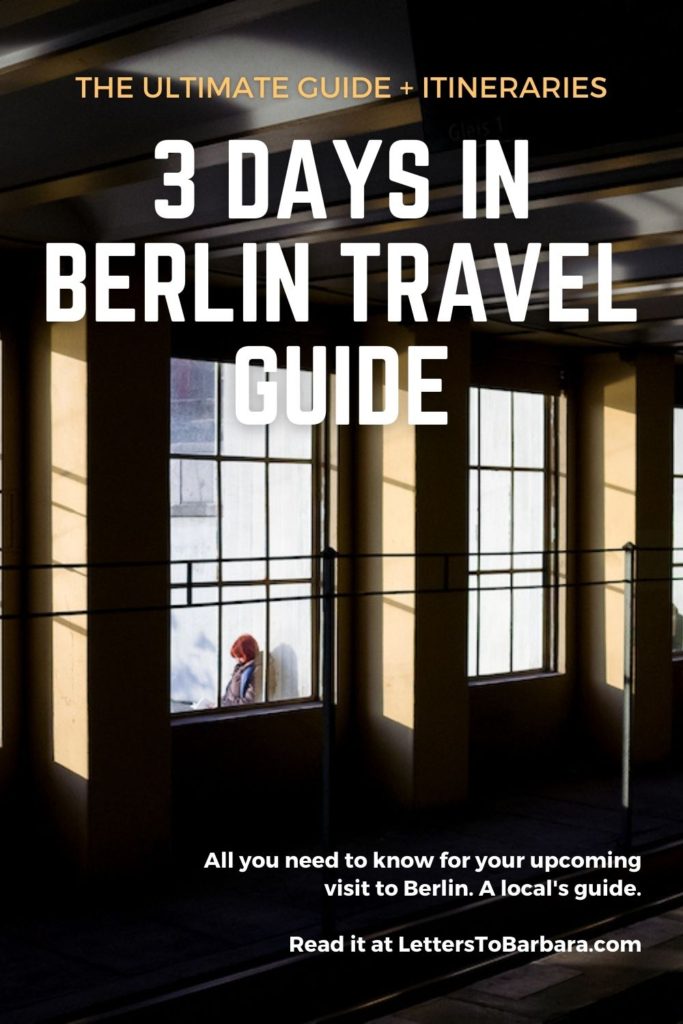
Sharing is caring. Please share the three days in Berlin: travel guide and itineraries with your friends.
Last Updated on March 1, 2023 by George Pavlopoulos




